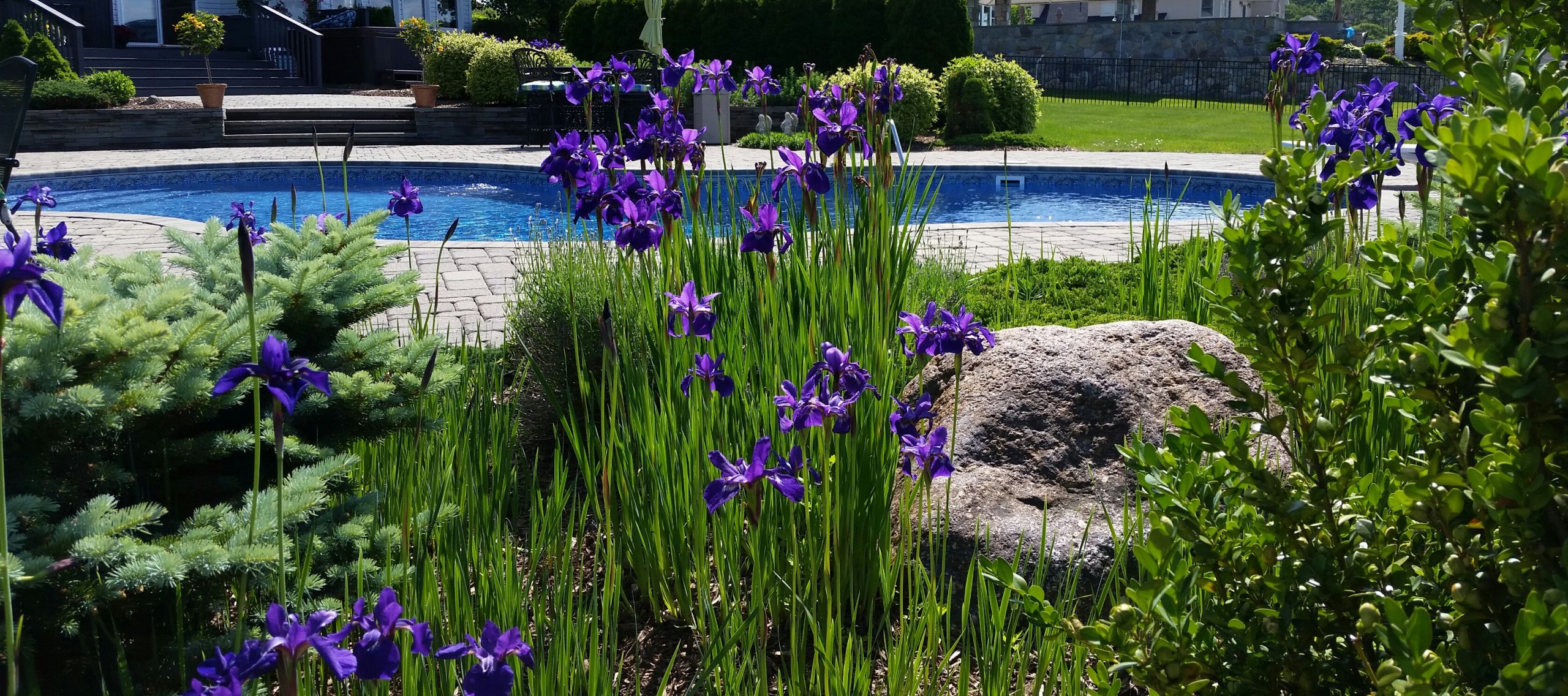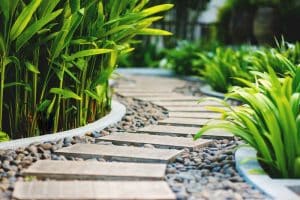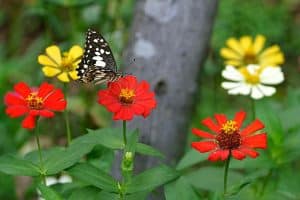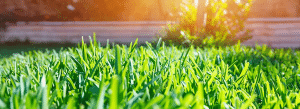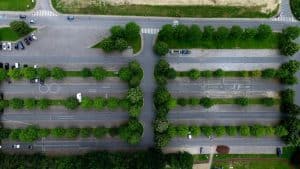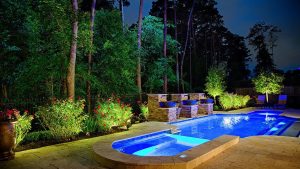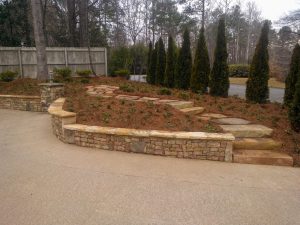You’ve chosen to install a pool. After hours spent laboring over numerous design choices – size, shape, location and materials – you and your contractor have finally settled on a plan. But an equally important construction aspect can transform your pool from a concrete jungle into a cool, relaxing and visually pleasing paradise: landscape design.
Pool landscaping – the plants, organic materials and accompanying hardscapes used in the immediate area surrounding your pool – has the ability to make your family’s recreational water feature not only more attractive, but more functional as well. Good landscape design helps create mood, whether you’re looking to recreate the lush feel of the tropics or a formal space for entertaining. Choosing the right plants is a critical part of bringing your vision to life.
No matter which design aesthetic you’re aiming for, there are certain considerations that apply to all pool landscaping styles. These include:
- Safety: Are the selected plants safe for pets and children?
- Maintenance: Are they easy or difficult to maintain, and do they create a lot of debris?
- Hardiness: Do they grow well in my zone and will they require special care?
- Functionality: Do they help provide privacy or shade, deter pests, or are they merely ornamental?
We’ll take a look at each of these concerns, as well as offer our top tips for poolside plants that we consider star performers.
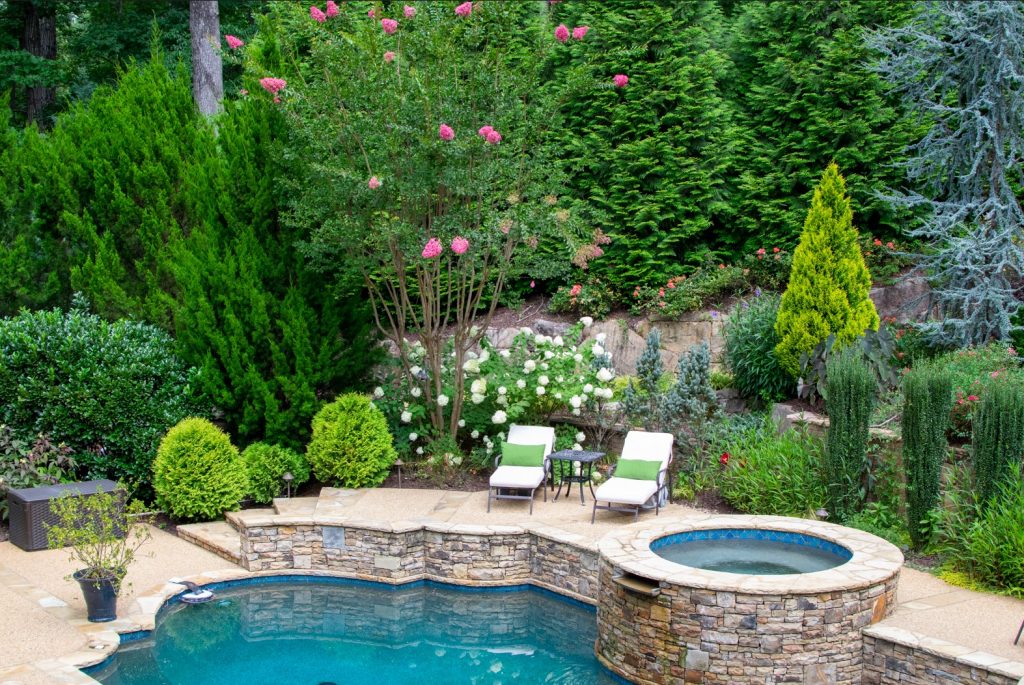
1. Safety
Pools can provide years of enjoyment for your family, improving your homeowning experience. However, without safety being taken into consideration at every step of the design and installation process, a pool can present numerous dangers. Aside from code-compliant fencing, locked gates and other well-known precautions, your landscaping choices also hold the possibility for hidden threats. Some plants, while attractive, have thorns, sharp-edged leaves, or are toxic to people and/or pets. For example, oleander – a common and beautiful flowering shrub – is extremely toxic and should be avoided in locations that might encourage human contact. Instead, look for substitutes like hydrangea or hibiscus. Several varieties of hydrangea, including the limelight hydrangea, are both sun and heat tolerant and bloom throughout the summer in zones 3a through 9a. Similarly, hibiscus – whether the hardy rose of Sharon that thrives in zones 5-9, or the tropical variety that is best kept in a container outside zones 9-11 – provides a reliable splash of color that is completely safe for all of your pool guests..
2. Maintenance
Your pool was designed for relaxing, so the last thing you want is high-maintenance landscaping. Whether it’s something that requires frequent pruning, or those that create a lot of debris that can stain your hard surfaces or clog your filter, some plants are best left for outside the pool fencing. Large-leaved plants such as bird of paradise and elephant ear are easier to deal with than those that produce a lot of smaller leaves, and they also have the additional benefit of lending a tropical touch. Bird of paradise won’t survive winter months outside zones 9-12 however, so it is best suited to containers in cooler climes. An extraordinarily tidy plant, elephant ears also work well in containers, where they fulfill the “thriller” role in the thrillers, fillers, and spillers hierarchy. Hardy in zones 7-11, they can additionally be planted in-ground as a perennial and will reemerge in late spring. Another large-leafed addition to your poolside area is the canna lily, which produces a warm array of colorful flowers atop 4-5 feet stalks, and thrives in full sun in USDA zones 7-10.
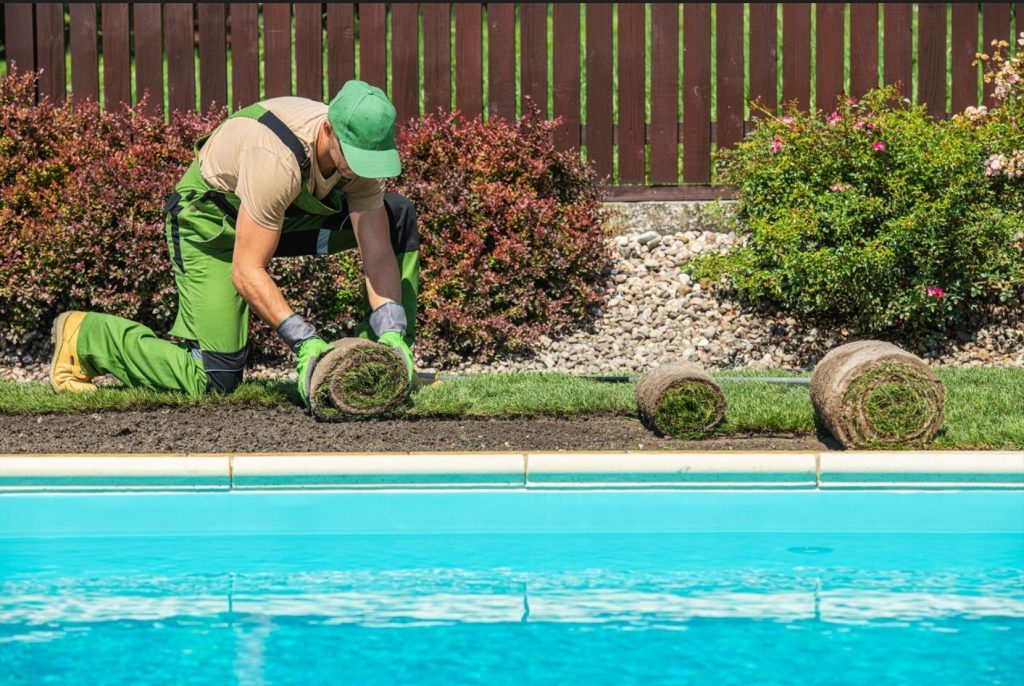
3. Hardiness
Privacy is a significant concern for many pool owners, particularly in crowded neighborhoods. When a fence isn’t sufficient, people often turn to landscaping to help shield their pool from the view of nosy neighbors. Vines that form an impenetrable organic screen over trellises are one option, especially in smaller spaces that don’t allow for rows of thick hedges like arborvitae. Several varieties of vine also have the benefit of flowers, providing visual punch and in some cases, pleasing scent. One particularly
4. Functionality
Privacy is a significant concern for many pool owners, particularly in crowded neighborhoods. When a fence isn’t sufficient, people often turn to landscaping to help shield their pool from the view of nosy neighbors. Vines that form an impenetrable organic screen over trellises are one option, especially in smaller spaces that don’t allow for rows of thick hedges like arborvitae. Several varieties of vine also have the benefit of flowers, providing visual punch and in some cases, pleasing scent. One particularly aromatic variety is star jasmine. A rapid grower, this vine quickly covers a support structure and provides an evergreen privacy screen in zones 7b-10. However, unlike certain herbs that repel pests (citronella is a favorite for deterring pesky mosquitoes) the highly-fragrant flowers of this vine do tend to attract bees, which is something to be taken into consideration.
For more tips on poolside design and all of your other landscaping needs, Contact the experienced professionals at Oasis.

